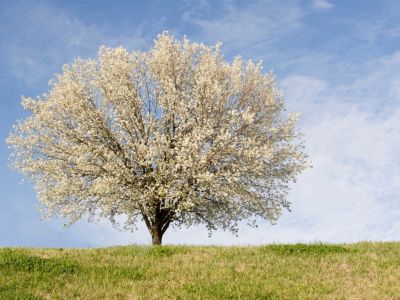Why Bradford Pear Does Not Bloom
A Bradford pear tree does not need another tree nearby in order to bloom. It usually produces a profuse display of flowers whether it stands alone or is planted in a group. No blooms on your Bradford pear tree could be a sign of disease or plant culture problems. The first thing to note about a non-flowering Bradford pear tree is that it takes about 5 years of growth for the tree to be mature enough to bloom. This is normal for many ornamental trees. Another reason your Bradford pear does not bloom might be that it is not getting enough sunlight. A Bradford pear demands full sun to perform. Plant it in a location where it is not shaded by taller trees or structures. No blooms on a Bradford pear can also be caused by insufficient water or very poor quality soil. Be sure to apply regular water to the root zone. This is especially important if the tree is young and not fully established. Fertilize your Bradford pear with a high phosphate fertilizer if your soil nutrition is not up to par. The Bradford pear is a member of the rose family. A common bacterial disease among species in the rose family is fire blight. Fire blight can lead to a Bradford pear not flowering. The signs of fire blight are rapid die back of leaves and branches in such a way that they look blackened or scorched. There is no cure. To slow the spread of the diseases cut off the branches 6-12 inches (15 to 30 cm.) below the burnt section, and disinfect your pruning tools. Nurture the tree as best as possible. The Bradford pear is an easy tree to grow. The key to getting a Bradford pear to bloom is adequate care and patience. Yes, you have to be patient and wait for the blooms. Make sure it gets enough sun, water and nutrition, and you’ll be treated to its lovely flowers season after season.
